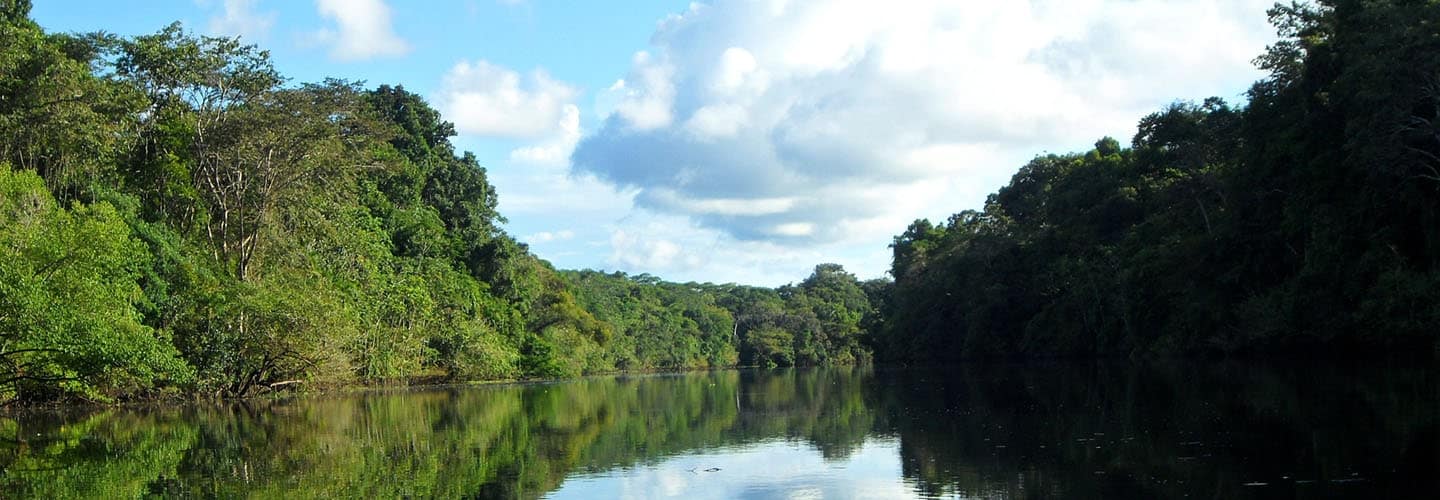
At 8,042 square miles, Pacaya-Samiria is one of the largest protected natural areas in all of Peru, taking up portions of the Loreto, Requena, Alto Amazonas and Ucayali provinces in the department of Loreto. It was established by the Peruvian government in 1982, taking its name from the Pacaya and Samiria rivers which flow through it. Like the rest of the Amazon rainforest region, Pacaya-Samiria is extraordinarily diverse, containing 449 bird species, 102 mammals, 69 reptiles, 58 amphibians, 256 fish and 1,204 plants.
An important characteristic of this protected area is a cycle of rising and falling rivers due to the rainy season and corresponding dry season. During the rainy season, much of the area is flooded. The water level accumulates until its high point, called its crescent, in May. After this, the rains decrease and the water levels slowly fall until their low point in August. This system of rising and falling rivers leaves the area with a landscape containing many small bodies of water, allowing an abundance of aquatic species to flourish. During the dry season, fish also remain in the water in extremely concentrated amounts due to the reduced water level, leaving very fertile fishing grounds for the large variety of birds that call the region home.
Another group which takes advantage of the good fishing are the estimated 42,000 people living within the park. Dry season also exposes many large beaches which the locals use to grow rice, beans, and other crops. These beaches are frequented by some of the park’s most iconic residents, as well: the two large species of river turtle that use the beaches to lay their eggs.
The best way to see these and many other amazing natural wonders is to book a tour with a qualified guide. The majority of guided tours to the Pacaya-Samiria reserve will leave from Iquitos or the town of Nauta a few hours’ drive away. There are daily flights to Iquitos from Lima and other cities in Peru, or if you prefer to travel via boat you can check out our guide on how to get to Iquitos without flying.
From Iquitos, you’ll have a number of options for visiting the reserve. The tour you pick will depend on your budget and the number of days that you’d like to stay. Two of our favorites are Maniti Expeditions and Amazon Explorer. It’s recommended to book ahead of time to ensure that there is space on your desired tour.
These are just some of the many, many species that can be found in the Pacaya-Samiria Reserve.
After your visit to the jungle, we highly recommend using Peru Hop to see the other regions of this amazing country. Peru Hop, is a hop on hop off style service which allows you to set your own itinerary all across southern Peru and even into Bolivia.